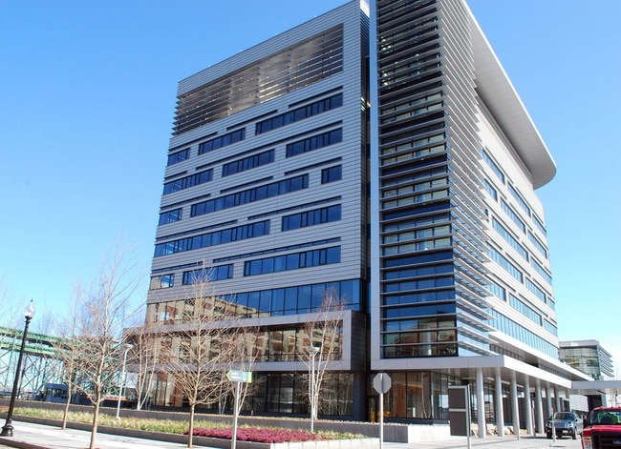We may earn revenue from the products available on this page and participate in affiliate programs. Learn More ›
George Peabody Library

Wikimedia Commons via Matthew Petroff
The George Peabody Library, affectionately called Baltimore’s Cathedral of Books, was designed to house more than 300,000 volumes. Completed in 1878 by Baltimore architect Edmund G. Lind, the library features a neo-Greco interior with a massive 61-foot-high atrium that culminates in a latticed skylight of frosted heavy glass. The atrium is surrounded by five tiers of ornamental black cast-iron balconies and gold-scalloped columns.
New York Public Library

The twin statues flanking the entrance to this Beaux-Arts structure are two of the Big Apple’s most recognizable landmarks, and the inside of the Main Branch of the New York Public Library is no less impressive. One of the most beautiful interior views is the Main Reading Room with its lofty 52-foot-high ceiling. The building was declared a National Historic Landmark in 1965, and was listed on the National Register of Historic Places the following year. As of 2015, the Main Branch housed an estimated 2.5 million volumes.
Library of Congress

Visitors will find architectural hints of our democracy’s founders’ European roots in the Library of Congress, which is the oldest federal institution in the United States. The library opened to the public in 1897 and features lavish interiors created by some of the finest American sculptors and painters. The exterior boasts an eloquent Court of Neptune Fountain sculpted by Roland Hinton Perry, and nine prominent busts of leading philosophers, authors and statesmen.
Related: 35 Strange But True Facts About America
Harold Washington Library Center

The deep red brick, Beaux-Arts stylings, and massive size of the Harold Washington Library Center make it impossible to miss. Serving as the central library for the Chicago Public Library System, the building’s total square footage is estimated at 972,000 square feet. The granite and brick structure is topped with pediments of glass, steel and aluminum, and the roof is ornamented with seven painted aluminum acroteria, and medallions featuring Ceres, the Roman goddess of agriculture.
Aldrich Public Library

This stunning Classical Revival building was designed by architect Penn Varney of Massachusetts and constructed in 1907 and 1908 using a bequest from local businessman Leonard Frost Aldrich. The two-story structure features a brick veneer exterior trimmed in local granite, Ionic columns and a decorative granite frieze. The Vermont library was listed on the National Register of Historic Places in 2016.
Fisher Fine Arts Library
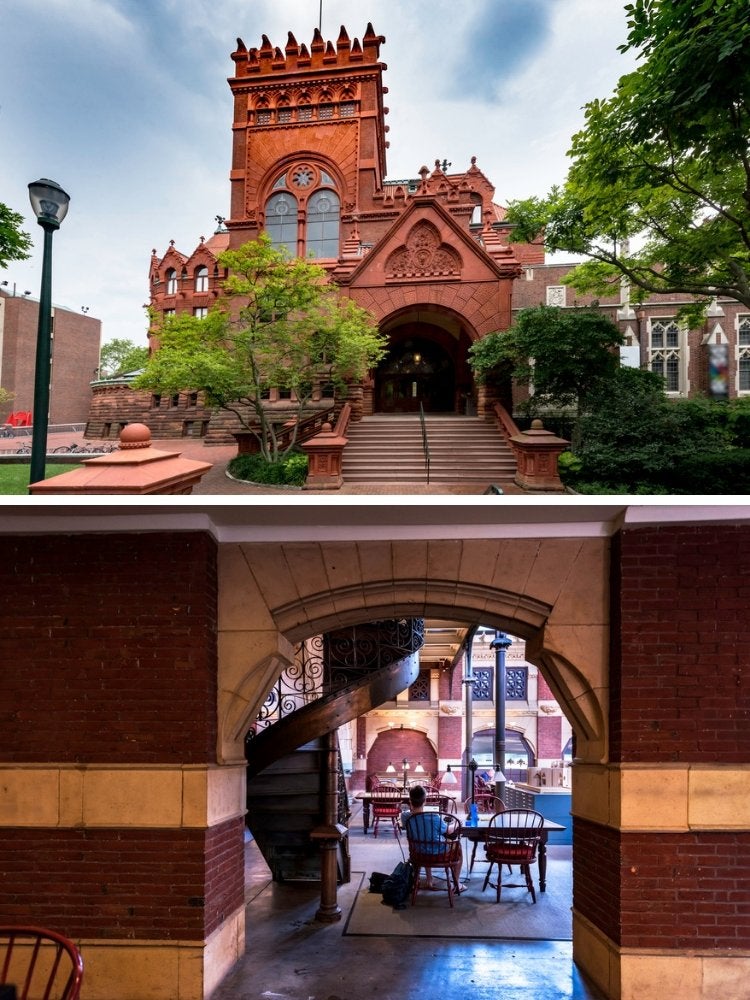
The Fisher Fine Arts Library houses the University of Pennsylvania’s architecture, landscape architecture, city and regional planning, historic preservation, history of art, and studio arts collections. Previously known as the Furness Library, the structure was designed by the acclaimed Philadelphia architect Frank Furness in a Venetian Gothic style. Interiors feature clerestory windows and an enormous skylight. Completed in 1890, the building was listed on the National Register of Historic Places in 1972, and named a National Historic Landmark in 1985.
Philadelphia Free Public Library

Built to house more than 1 million volumes—and exceeded in size only by the British Museum, the New York Public Library, and the Library of Congress—the Central Library of the Free Library of Philadelphia system was designed by leading African-American architect Julian Francis Abele and opened its doors in 1927. The building was designed to evoke the spirit of 17th and 18th century French architecture, based loosely on the designs of the Ministère de la Marine and Hôtel de Crillon on Place de la Concorde in Paris.
Boston Central Library

The Boston Public Library’s McKim Building is lavishly decorated in a European Renaissance style. Massive inscriptions and bronze doors adorn the exterior, while the interior is graced with a central courtyard surrounded by galleries. The building, which opened in 1895, was listed on the National Register of Historic Places in 1973, and was designated a National Historic Landmark in 1986.
Norman Williams Public Library
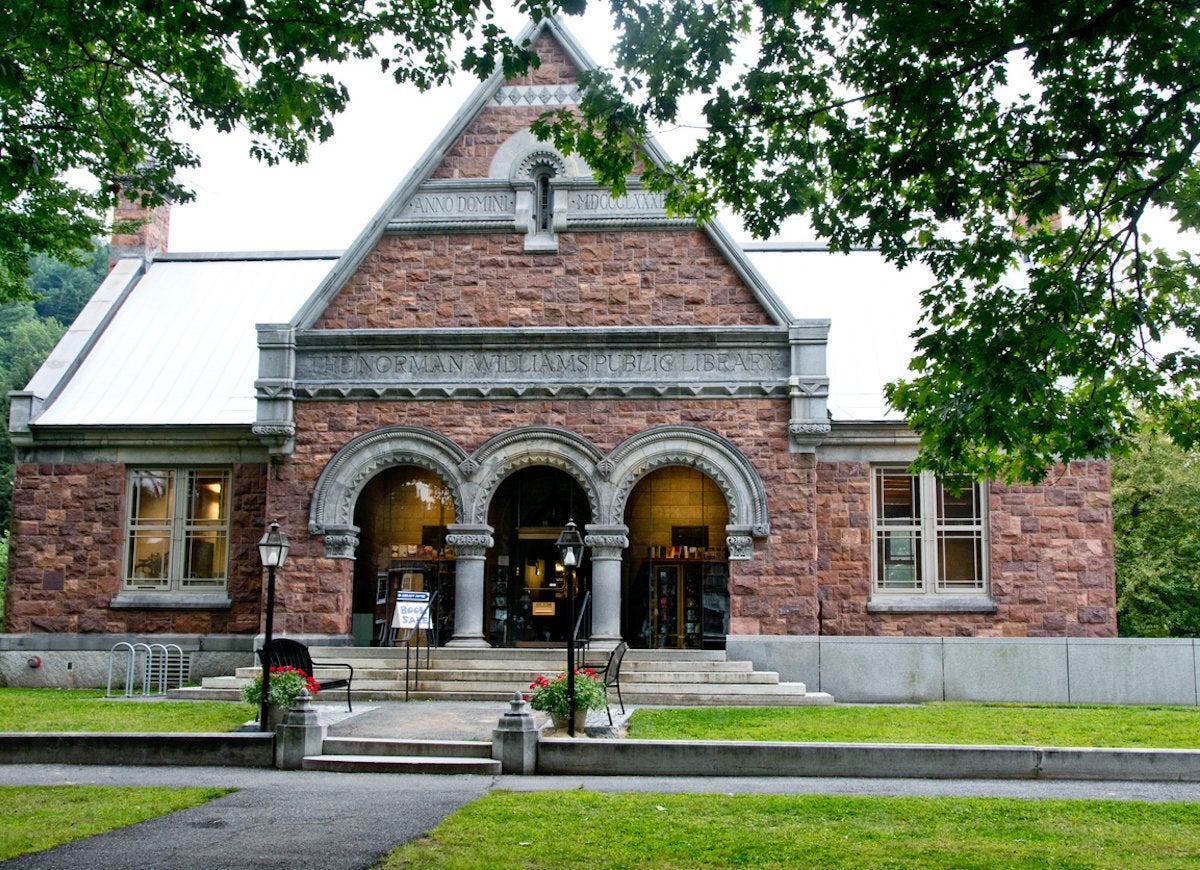
The Norman Williams Public Library was a gift to the community of Woodstock, Vermont by local businessman Dr. Edward H. Williams as a memorial to his parents, Norman and Mary Williams. The pink sandstone building, constructed in 1883 on the original site of his parents’ home, features grand arches and classically-inspired columns.
San Francisco Public Library
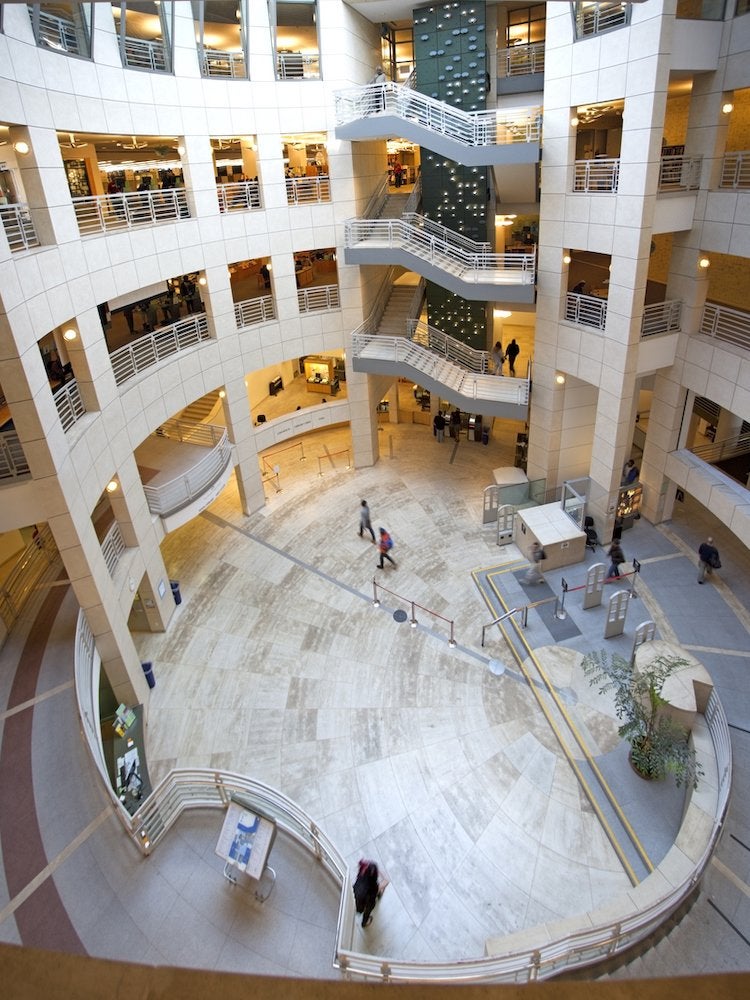
San Francisco’s Main Library, opened in 1996, features a white granite façade and the interior boasts a five-story central atrium, four-story grand staircase and a dramatic skylight. Inlaid hardwood floors, custom cabinetry constructed of sycamore, curly maple, lacewood and cherry fill the space with warmth and grandeur. This treasure, situated in an earthquake-prone zone, is engineered to resist earthquakes up to a magnitude of 8.3.
Fredericksburg Memorial Library
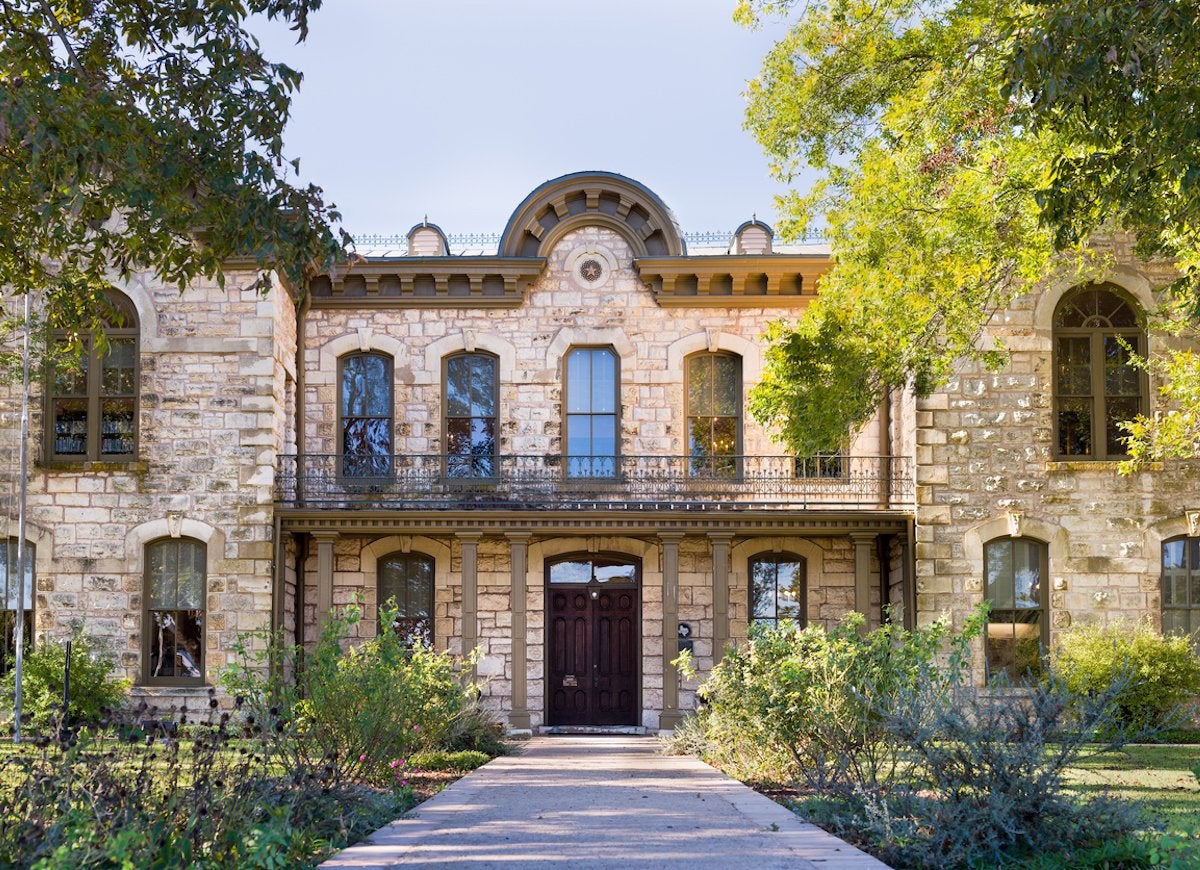
Also known as the Pioneer Memorial Library or the Old Courthouse, the Fredericksburg Memorial Library was designed in a Romanesque Revival style by architect Alfred Giles. Built in 1882, the limestone library was designated a Recorded Texas Historic Landmark in 1967 and was named to the National Register of Historic Places in 1971.
Towell Library Charleston Campus

The Towell Library serves as an anchor for the campus of the College of Charleston, along with neighboring Randolph Hall and Porters Lodge. Together these buildings, all flanking the college’s Cistern Yard, were designated a National Historic Landmark in 1971. This imposing stucco building, built in 1856, features arched windows that mirror the freestanding archways in the surrounding landscaping.
Related: The Most Charming College Towns to Visit This Fall
Iowa State Law Library
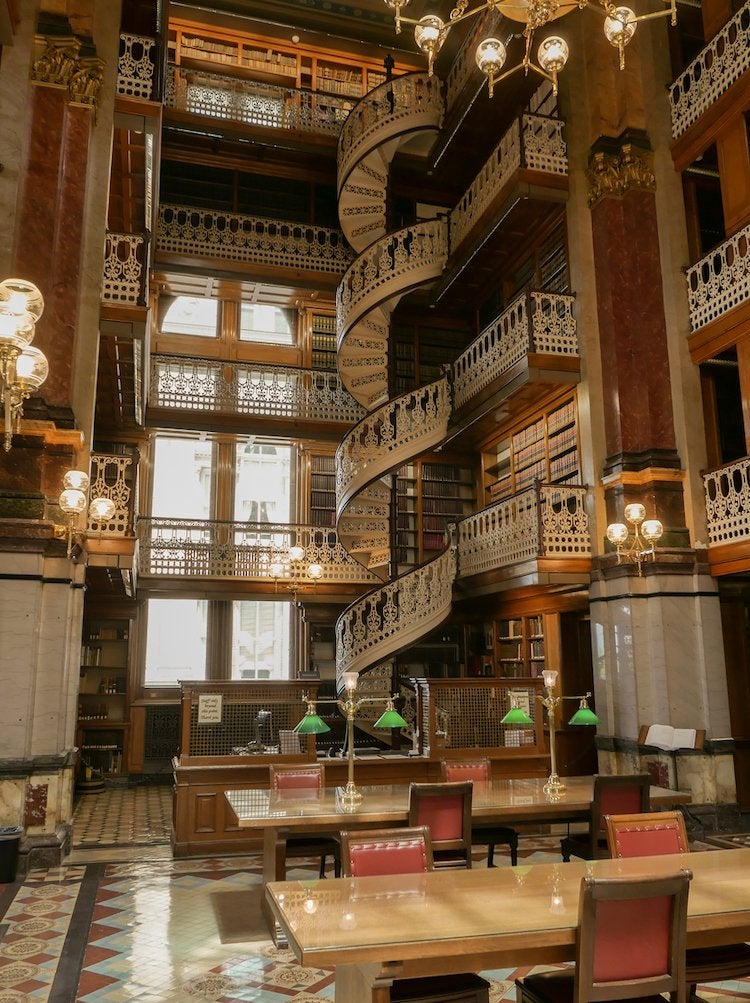
Iowa’s State Law Library is located in the state Capitol building and was named one of the 45 most majestic libraries in the world by the Architecture and Design website. The architectural highlight might be the two wrought iron spiral staircases on the north and south ends of the library. The staircases were built in 1882 and 1883 to facilitate access to the library’s estimated 100,000 volumes. Other interior features include a five-story atrium, hand-stenciled ceilings, an encaustic tile floor, marble wainscoting, and ash and chestnut wood finishes. A striking 130-year-old stained glass window crowns the atrium.
Beinecke Rare Book & Manuscript Library

Flickr via Lauren Manning and istockphoto.com
The Beinecke Rare Book and Manuscript Library, opened in 1963, houses Yale University’s collection of literary archives, early manuscripts, and rare books. The imaginative interior features a six-story glass-enclosed tower of book stacks containing 180,000 volumes. The stacks are constructed of translucent marble panels that filter and refract natural light, allowing the books to be viewed without exposing them to the damages of direct sunlight.
Garden District Library

Flickr via Ed Bierman
The Milton H. Latter Memorial Library in the historic Garden District of New Orleans was donated to the city by the Latter family in memory of their son. Located in a historic, 1907 neo-Italianate mansion, the interior of the library features Flemish-style woodwork hand-carved by local craftsmen, as well as mahogany paneling and staircase. European imports crown the walls and ceilings: mirrors and chandeliers imported from Czechoslovakia; Dutch murals; and fresco ceilings, signed “De Rudder, Paris 1858,” from France.
University of Michigan Library
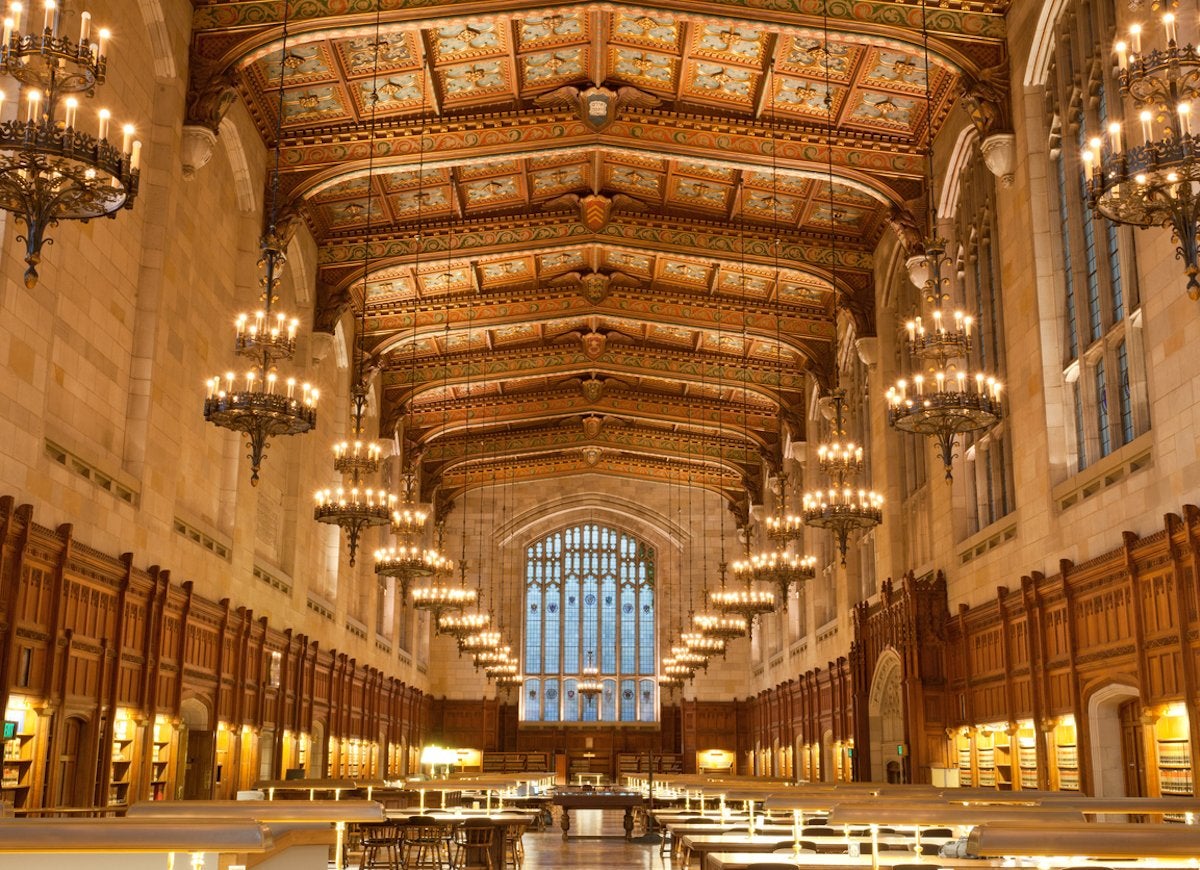
This English Gothic masterpiece is one of the most recognizable buildings on the University of Michigan campus, and houses more than 1 million volumes. The University of Michigan Law Library was built between 1924 and 1933 by the architectural firm York and Sawyer, with funds donated by attorney and alumnus William W. Cook. The light-filled Neo-gothic Reading Room, with its 50-foot ceiling and exquisite stained glass windows, may be the most striking part of this beautiful library.
Detroit Public Library
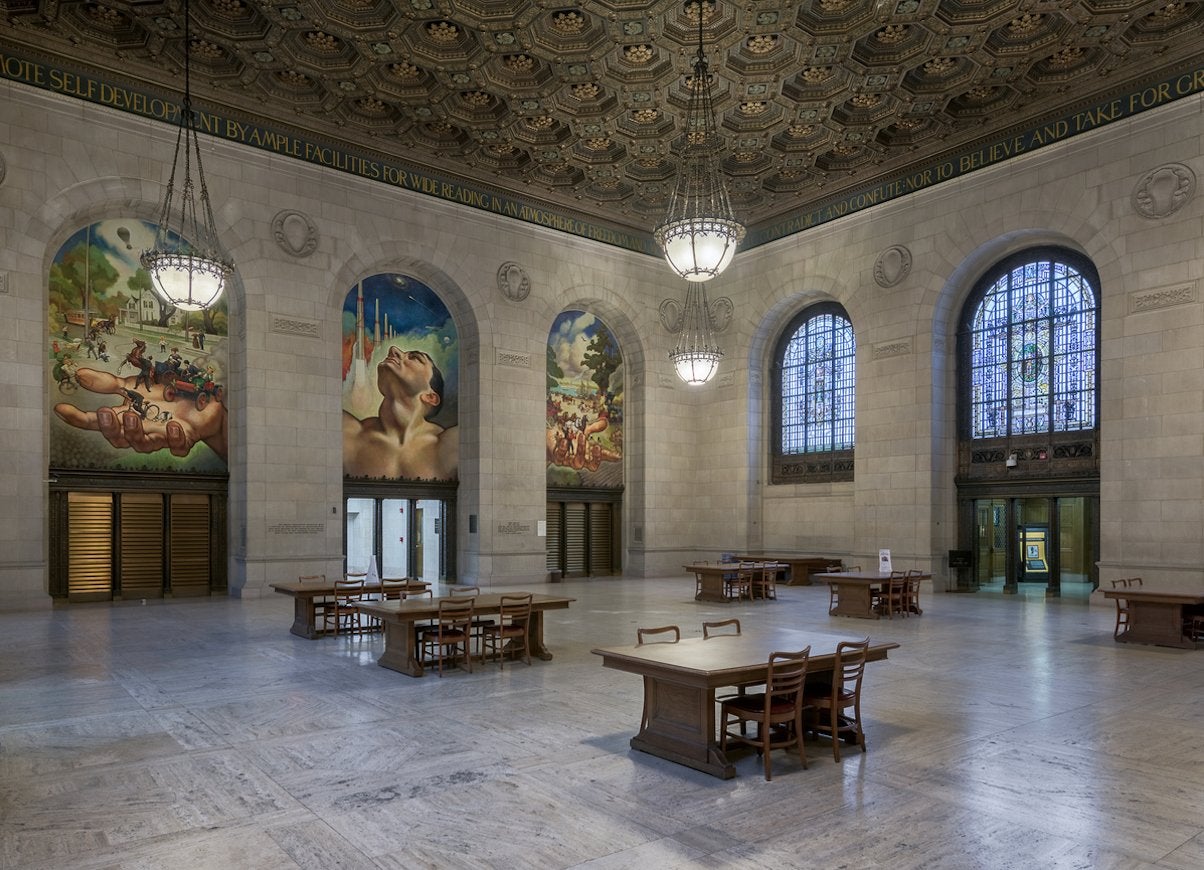
The Detroit Public Library was designed by architect Cass Gilbert in the Italian Renaissance style. The building was constructed with Vermont marble and Italian marble trim and is decked with large murals and mosaics, including The River of Knowledge mosaic by Millard Sheets; a tryparch mural by Gari Melchers depicting Detroit’s early history; and a tripych mural by local artist John Stephens Coppin showcasing the history of transportation. The Main Library is part of Detroit’s Cultural Center Historic District, listed in the National Register of Historic Places.
Related: The 34 Greatest Things Ever Built in America
St. Louis Public Library

The St. Louis Central Library, designed by architect Cass Gilbert and completed in 1912, combines numerous Beaux-Arts and Neo-Classical influences. Architectural details drawn from the Pantheon, Vatican, and Michelangelo’s Laurentian Library commingle throughout the halls. The interior was recently renovated—to the tune of $70 million—to showcase the turn-of-the-century splendor.
Phillips Exeter Academy Library

Wikimedia Commons via Gunnar Klack
The largest secondary school library in the world, the Phillips Exeter Academy library in New Hampshire houses 160,000 volumes and spans nine floors. When the school’s original library was no longer suitable to house the ever-expanding collection, sometime in the 1950s, the school courted architects who could create a suitable structure and ultimately settled on a modern design from Louis Kahn. That decision cemented Exeter Academy in library history, and the building has since been awarded architectural awards for its stunning design.
Doe Memorial Library

Wikimedia Commons via Daniel L. Lu
The Doe Memorial Library is the main library for the University of California, Berkeley, and was completed in 1911. Inside, the North Reading Room features a large barrel-vaulted ceiling dotted with tall Roman-arched windows; the East or Heyns Reading Room features hand-carved wood ceilings depicting the names of famous academics throughout history, as well as Emanuel Gottlieb Leutze’s Washington Rallying the Troops at Monmouth. The library is listed as a California Historical Landmark and on the National Register of Historic Places.
Los Angeles Central Library

The Richard J. Riordan Central Library in downtown Los Angeles was built in 1926 in what is now called the Goodhue Building, and was expanded with a 1993 addition named for former mayor Tom Bradley. Both the interior and exterior feature numerous sculptures, and the central Rotunda features a magnificent bronze Zodiac Chandelier created by Lee Lawrie. The library’s beauty and cultural significance has earned it a designation as a Los Angeles Historic Cultural Monument and it is listed in the National Register of Historic Places.
University of Washington Suzzallo Library

Credited with being the most identifiable building on campus, the Suzzallo Library is the central library of the University of Washington in Seattle. Outside the library, terra cotta sculptures of influential thinkers and artists surround the entry. Inside, a grand staircase, oak bookcases, hand-carved friezes, painted and stenciled timber-vaulted ceilings, and tall stained glass windows dazzle the eyes.
Crested Butte Library
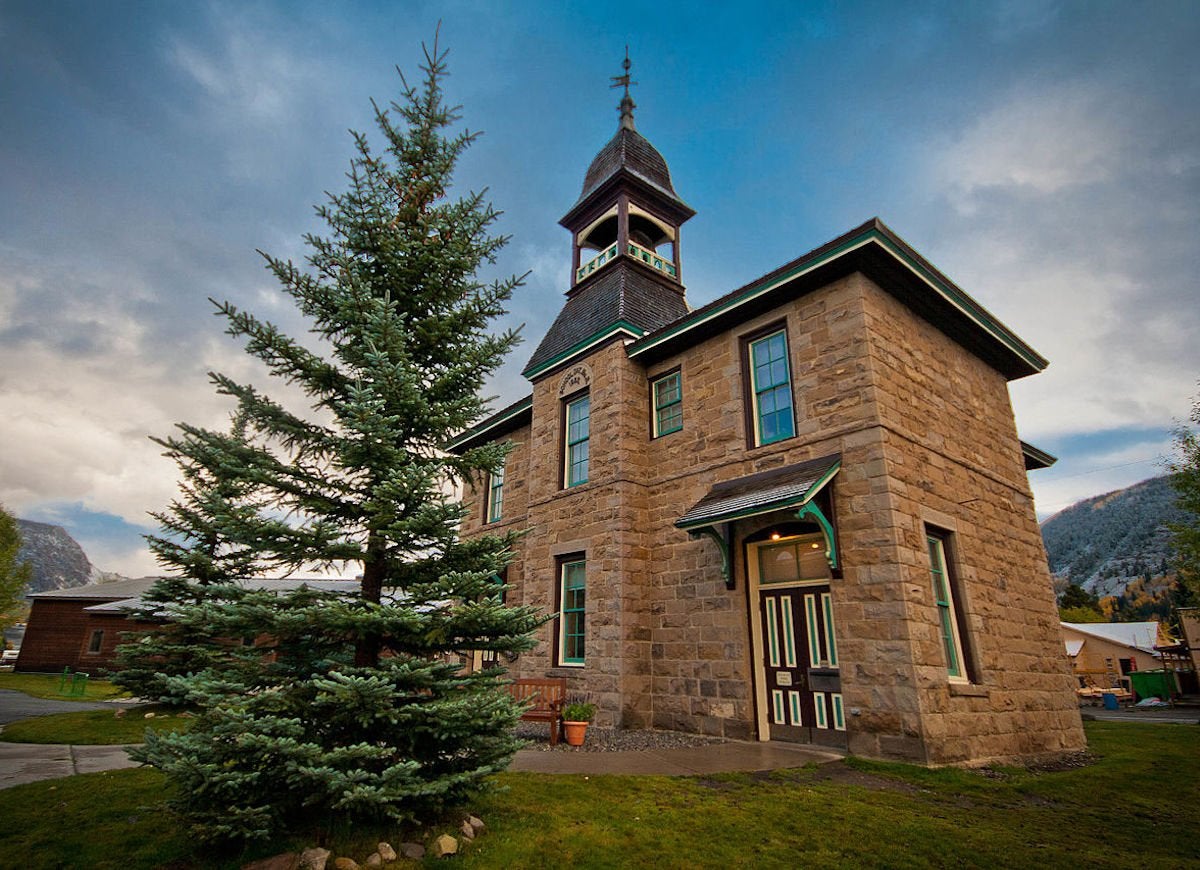
Wikimedia Commons via Helimedic39
The Crested Butte Library in Colorado is housed in the Old Rock building, a two-story, two-room schoolhouse, built in 1883 of local sandstone. The Old Rock is among the oldest buildings in the town of Crested Butte and was completely renovated and re-opened as the Community Library in 1993. The Old Rock is listed on the National Register of Historic Places.
Deering Library

The Charles Deering Memorial Library is one of the most photographed buildings on the campus of Northwestern University, and houses the University archives, music library, art collection and special collections. Designed by renowned architect James Gamble Rogers in the Gothic style, the library was modeled after King’s College Chapel in Cambridge, England and built in 1933. The library is constructed of Wisconsin Lannon stone, Indiana Bedford limestone, Briar Hill sandstone, Winona travertine, granite and concrete. Inside window medallions designed by G. Owen Bonawit, and wood and stone carvings by sculptor Rene Paul Chambellan create an artistic tableau.
Camden Public Library

Flickr via Timothy Valentine
The Camden Public Library was constructed on land donated by local resident Mary Louise Curtis Bok in 1916 specifically for construction of a public library. The grounds of this Maine library include an amphitheater and were designed by noted landscape architect Fletcher Steele. The library was designated as a National Historic Landmark in 2013 and is listed on the National Register of Historic Places.









